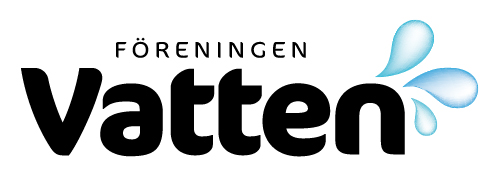MICROSCREENING FOR STORMWATER TREATMENT
A competitive system for stormwater treatment should provide efficient particle removal, small footprint, rapid start-up, robustness, cost effectiveness and flexibility. Chemical pre-treatment followed by microscreening could fulfil these requirements. Thus the potential in such a system was investigated within the framework of a project involving Kemira Kemi AB, Hydrotech AB and the Department of Water […]
USE OF MAGNETIC ION EXCHANGE TO IMPROVE DOC-REMOVAL
Problems associated with the amount of dissolved organic carbon (DOC) in drinking water treatment are very common. They range from the very obvious ones like treated water taste and odour and appearance, to the less understood disinfection by-product formation, bacterial regrowth in distribution network, exhaustion of activatedcarbon, membrane fouling and increased coagulation chemical demand. Ion […]
A COMPARATIVE STUDY OF SIX HYDROPONIC WASTEWATER TREATMENT PLANTS
During the last two decades, wastewater treatment in systems combining conventional biological processes and hydroponics has been tried at several locations. In this article, six different systems are described and their treatment results compared. Five systems were found in literature, and the sixth system was constructed and operated by the microbiology group at KTH. These […]
DESIGN OF WASTEWATER TREATMENT PLANTS USING SUBMERGED BIOLOGICAL FILTERS FOR NITROGEN REMOVAL
Two concepts for nitrogen removal using submerged biological filters are discussed, namely pre-denitrification followed by combined precipitation and pre-precipitation followed by post-denitrification. The preliminary design basis is presented, together with a design example and cost figures. Pre-denitrification is the preferred method for moderate nitrogen removal efficiencies (70 %) or if the wastewater is very dilute […]
NORWEGIAN STRATEGIES IN THE TREATMENT OF MUNICIPAL WASTEWATER TOWARDS THE REDUCTION OF NUTRIENT DISCHARGES TO THE NORTH SEA
The paper deals with a research programme that the Norwegian environmental control authorities have established in order to be able to recommend how the municipal discharges of nutrients to the North Sea may be reduced by 50 % within 1995. The strategy is to ensure phosphorus removal by chemical treatment for all plants > 5,000 […]
FALKENBERGS KOMMUN – OKOME AVLOPPSRENINGSVERK Kvävereduktion i biologiska dammar
Okome samhälle har ca 180 personer vilka är anslutna till reningsanläggningen som utgöres av 2 st biologiska dammar. Dammarna anlades i mitten på sextiotalet och drevs konventionellt fram till 1986. Reningsanläggningen kompletterades sedan med kalkfällning och kalksilon med doseringsutrustning placerades mellan första och andra dammen. Reningsresultaten för åren 1987-1990 visar att anläggningen har fungerat bra. […]
RESTORATION OF LOWLAND STREAMS: THE BUILDING BLOCKMODEL
In many agricultural areas the small streams have been reduced to drainage ditches. This not only has destroyed important natural habitat but has reduced the self cleaning and nutrient reduction ability of agricultural streams. There is now much discussion about how this trend can be reversed in a practical and cost effective way without disrupting […]
PROVTAGNINGSMETODIK VID BESTÄMNING AV JÄRNKONCENTRATION I DRICKSVATTEN / Sampling Methods for Determination of Iron Concentration in Drinking Water
High concentrations of iron in drinking water, redwater, is a problem in some parts of Gothenburg. Iron concentration is determined in redwater areas by analysis of samples taken out of hydrants. Unfortunately it is very difficult to compare results from different samples and to find tendencies as different methods are used. During the investigation many […]
BELASTNINGSMODELLER FÖR NÄRSALTER FÖR BEDÖMNING AV FISKODLINGARS MILJÖPÅVERKAN I MARIN MILJÖ / Nutrient Loading Models for the Assessment of Environmental Effects of Marine Fish Farms
The aim of this paper is to present and discuss some results from the project ”The Coast As a Natural Resource”. The overall aim has been to attempt to develop new scientific criteria, methods and models for the planning of coastal waters. The sensitivity of different coastal areas to nutrient loading (nitrogen and phosphorus) from […]
PROJEKT KALKNING – KVICKSILVER – CESIUM – en sammanfattning av projektet i Örebro län / PROJECT LIMING – MERCURY – CESIUM – a summary of the project in the Örebro county, Sweden
This project is a summary of the work carried out within the project Liming – Mercury – Cesium in the Örebro county. The basic question is: How is it possible to reduce the mercury and cesium content in fish and the threat of ”blacklisting” presently acute for about ten thousand Swedish lakes? What measures could […]
